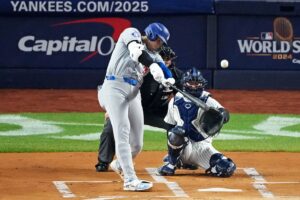The 2021 Minnesota Twins have reported for Spring Training 2021. The Twins starting rotation looks solid, with four spots already secured. They will have some guys competing for a spot as the number five starter.
Number One
Kenta Maeda returns as the number one starter. In last year’s abbreviated season he was outstanding with a 6–1 record and 2.70 ERA. He finished as the runner-up for the 2020 American League Cy Young Award. Though not overpowering with his fastball, Maeda’s mixing of his pitches keeps hitters off-balance. He throws three pitches — slider, change-up, and four-seam fastball — on a regular basis, but can also mix in a sinker, a cutter, and even a curve that keeps batters guessing.
Maeda was the Twins best pitcher during the shortened 2020 season and has taken the number one role from the inconsistent Jose Berrios. Maeda will certainly continue to improve. If he can put it all together for a full-season, the Twins might have themselves an ace for years to come.
Number Two
Jose Berrios will likely be the number two starter. He appeared in 12 games with a 5-4 record and 4.00 ERA. We know he has a live, quick arm that fires fastballs in the 95-96 MPH range. Though he’s improved his control and his strikeout rate, he gives up more home runs than one would want from a number two starter.
Berrios had 68 strikeouts in the 63 innings he pitched in the 2020 season. However, he struggles to put hitters away when he has two strikes on them, leading to high pitch counts. The Twins want him to become more consistent throughout the entire season. If he can learn to put hitters away quickly after getting ahead in the count it will help decrease his pitch count and keep him from the “dead-arm” scenario.
Number Three
The number three spot looks to belong to Michael Pineda. His time in Minnesota has been a challenging one. The Twins took a gamble with him when they signed him in December 2017 after his arm surgery. He began the 2018 season on the 60-day injured list while he rehabbed. In August the Twins revealed that Pineda would not pitch at all in 2018 due to a torn meniscus in his right knee.
The main concern for Pineda is staying healthy. If he can do that, it will certainly be beneficial since he pitches deep into the game. At age 32 he still has some speed on his fastball — 92–93 mph range, topping out around 96–97 mph — and has excellent command of all of his pitches.
Number Four
The recently-signed J.A. Happ will be the number four starter. The well-traveled 38-year-old lefty has put together a solid career on the field. His track record speaks for itself, with 123 wins. Happ is a guy that will take the mound every fourth or fifth day and give a solid effort.
Along with a fastball, Happ mixes in a curveball, a changeup, and a slider. He comes highly recommended by every coach and teammate who’s been around him. He will be a sensational fit in the Twins clubhouse. If he stays healthy, the Twins added a really good back-of-the-rotation guy.
Fifth Spot
With the signing (pending a physical) of Matt Shoemaker last week, there will be Spring Training competition for the last starter spot. It’s been a challenging career for Shoemaker, with a list of injuries since he broke onto the scene in 2014 with a 16-4 record and 3.04 ERA. His extensive injury history makes it a challenge to rely on him for a majority of innings. However, the Twins expect him to be fully healthy in camp, where he’ll look to compete for the back-end-rotation starter.
When healthy, he throws one of the most feared pitches in the game, a split-fingered fastball that dives into the dirt. He is also very effective with that pitch with runners on base, and uses it to cause batters to hit into double plays.
Shoemaker will have competition in Randy Dobnak and Devin Smeltzer, both also competing for the number five spot. Dobnak’s path has been anything but conventional. He went undrafted out of a Division II college before landing in a small independent league. He signed a minor league contract with the Twins in 2017, who actually never scouted him in person; they watched YouTube videos of his outings.
He made the big leagues in 2019 using a heavy sinker/slider combo. Though Dobnak’s fastball sits in the 91-94 mph range, his most successful pitches are his changeup and slider.
Dobnak began last season in the rotation and went 5-1 with a 1.78 ERA through his first six starts, but was later sent to the alternative site after posting an 8.27 ERA and 26 hits allowed in his last four outings. The coaching staff believes that those starts can be attributed to not keeping his sinker low, causing fewer groundball outs. Hopefully he gets the movement back on his sinker for 2021.
The final pitcher to look at for the number five starter is left-hander Devin Smeltzer. Not considered a top prospect in the Los Angeles Dodgers organization, he was traded to the Twins in 2018 and worked his way up in the big-league club. He has an unconventional unique pitching style. Smeltzer hides the ball, and his delivery and mechanics with his four-pitch mix keeps hitters guessing and off balance. In 2020, he only pitched 16 innings, spending most of the season at the Twins alternate training site.
Injuries will happen
Injuries are going to happen over the 162-game season. There’s nothing a pitcher can do to completely escape them. However, it appears the 2021 Twins will have plenty of candidates to fill in or take over as a starter due to an injury.
Main Photo:
Players Mentioned:
Kenta Maeda, Jose Berrios, Michael Pineda, J.A. Happ, Matt Shoemaker, Randy Dobnak, Devin Smeltzer






